Vintage Russian honey gingerbread
Brief history of Russian honey gingerbread
One of the oldest Russian pastry delicacies is what Russians call pryanik, a big cookie (you may call it small honey cake) baked with honey. The closest American word describing pryanik is gingerbread. But please make no mistake: Russian pryaniks are quite different from gingerbread in recipes, texture and flavor. In ancient Russia pryaniks were prepared only with honey because sugar was imported from distant countries and therefore it was very expensive. Russian word ‘pryanik’ comes from the adjective ‘spicy’ (ancient-Russian ‘pypryan’) which in turn derived from the word ‘pepper’ (ancient-Russian ‘pepyr’) designating spices and seasonings. At weddings, birthday parties, in the days of large and small Russian Orthodox holidays pryaniks were made in each city and each type of them had its own recipe, special shape and decoration. Technically, Russian pryaniks are vintage honey gingerbread.
The first written mention of the cakes with honey refers to 350 BC. Egyptians did bake unleavened breads and smeared them with honey. The Romans knew «panus mellitus»: Cakes smeared with honey too. Really large amount of honey added into dough (up to 1:1 to flour) was typical for the Russian honey gingerbreads which were baked in Russia in such a variety as in no any other country in the world. In Russia the first honey gingerbreads appeared in the 9th century. They were made of rye flour, honey and berry juice. These cakes were called “honey bread.” The name ‘pryanik’ was given to this healthy delicacy at much later times.
Russian honey gingerbread recipe
For all fans of healthy food here is one of many vintage Russian pryanik recipes. Once baked, this delicacy can be stored for long months and the preparation is quite simple. The high content of honey makes the finished cake spongy, soft, fragrant and highly resistant to staleness. Honey acts as a critical natural baking powder ingredient. However some sour cream (100-200 g per 1 kg of flour) sometimes is added which in combination with honey gives a slight fermentation that helps loosening dough.
INGREDIENTS: 3 glasses of whole grain wheat flour (750 ml, wheat , rye or a mixture); 1 glass of honey (250 ml); 50 g of real butter; 2 eggs; ½ teaspoon of baking soda (or 50 g of sour cream instead); ¼ teaspoon of powdered spices (for example: 35% coriander, 35% cinnamon, 10% cardamom, 10% nutmeg, and 10% allspice). Variations may include ginger instead of coriander or cinnamon. This would make pryanik a little closer to gingerbread. Also you may play with your own compositions.
PROCEDURE: Honey is pre-heated to some 40oC (100oF), mixed with butter and then poured into a dish with flour. Eggs are added, baking soda dissolved in warm water is poured and spices are added. The dough is kneaded thoroughly, wrapped in a napkin and put aside for 0.5 hour. When it rises, it is kneaded again, divided into pieces and roll out into circles with a diameter of about 20 cm, placed on an oven-tray slightly greased with oil and floured. Bake it in the oven at 185 – 220oC (360 – 430oF) for 30-35 min. To prevent the dough swollen too much, it may be pierced with a fork. When the cake look browned it is removed and covered with a towel until cool. Enjoy delicious Russian pryanik!
In conclusion, all the ingredients of Russian honey gingerbread are natural. No added sugar, no preservatives but honey plus a variety of spices to satisfy your taste. Even baking soda is not a requirement. For these reasons, Russian honey gingerbread is a great example of nutritious baked good that may also provide some anti-inflammatory and antioxidant effects due to added spices and honey. Of course the honey gingerbreads are high in sugars and therefore they should be considered as occasional delicious treats. The DyeDiet Calculator result for Russian honey gingerbread indicates zero chemical Health Risk = 0 and high Nutritional Value = 2.50. You may want to compare this with one of Lofthouse Frosted Sugar Cookies to see the huge difference in ingredients and nutritional value. Again, enjoy delicious vintage Russian honey gingerbread!
Category: Baked goods, Cookies, Healthy diet, RECIPES

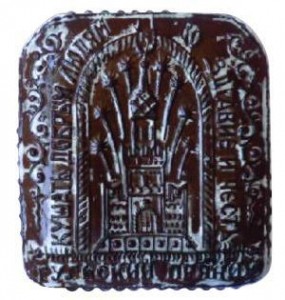
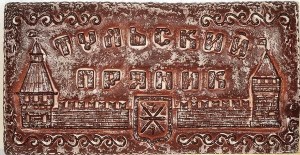
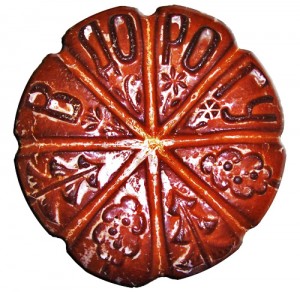
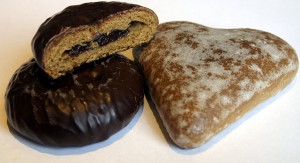




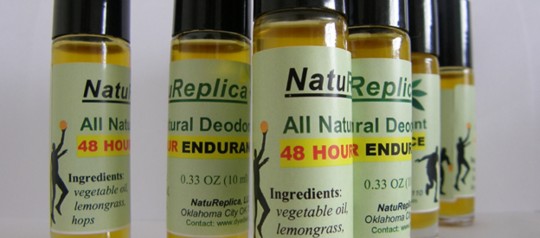

For a century, the recipe for the Kolomensky pastels – by far the most delicious – was a closely guarded secret, but then French candymakers added whipped egg-whites to an apple and fruit puree and discovered a new delicacy – the French marshmallow. At about the same time, Russian confectioners started using sugar instead of honey, and today pastels are made using the same process.
The reign of Peter I’s daughter Elizabeth in 1741–62 saw Russia’s participation in the Seven Years’ War (1756–63). During this conflict Russia annexed East Prussia for a while and even took Berlin. However, upon Elisabeth’s death, all these conquests were returned to Kingdom of Prussia by pro-Prussian Peter III of Russia .